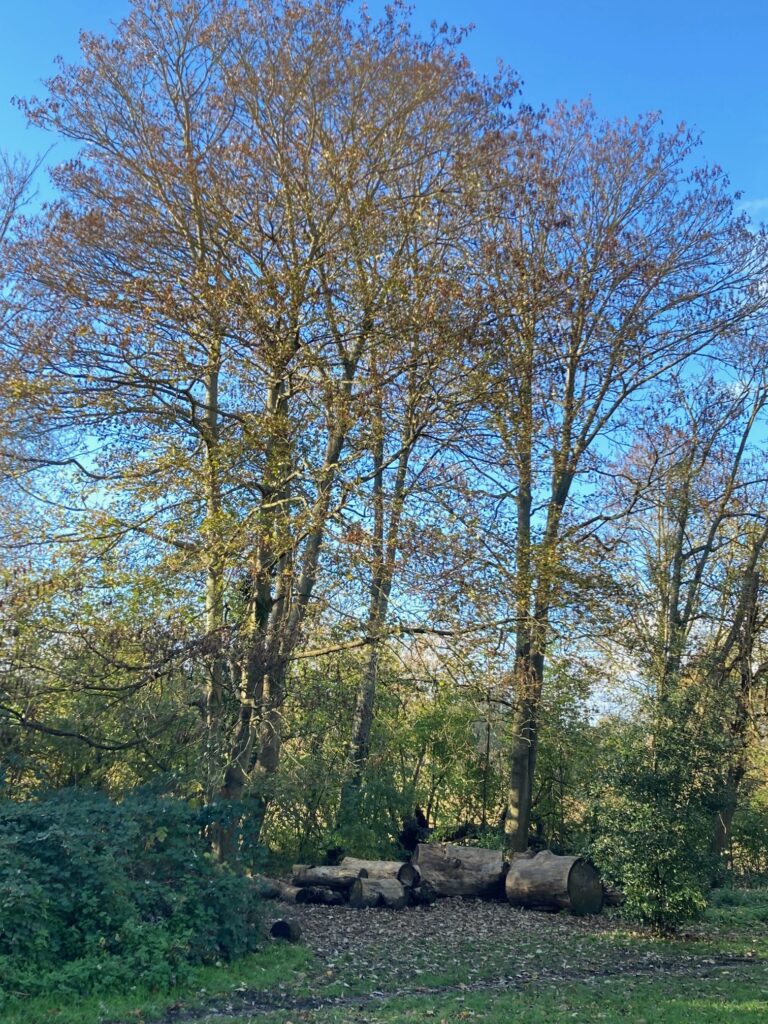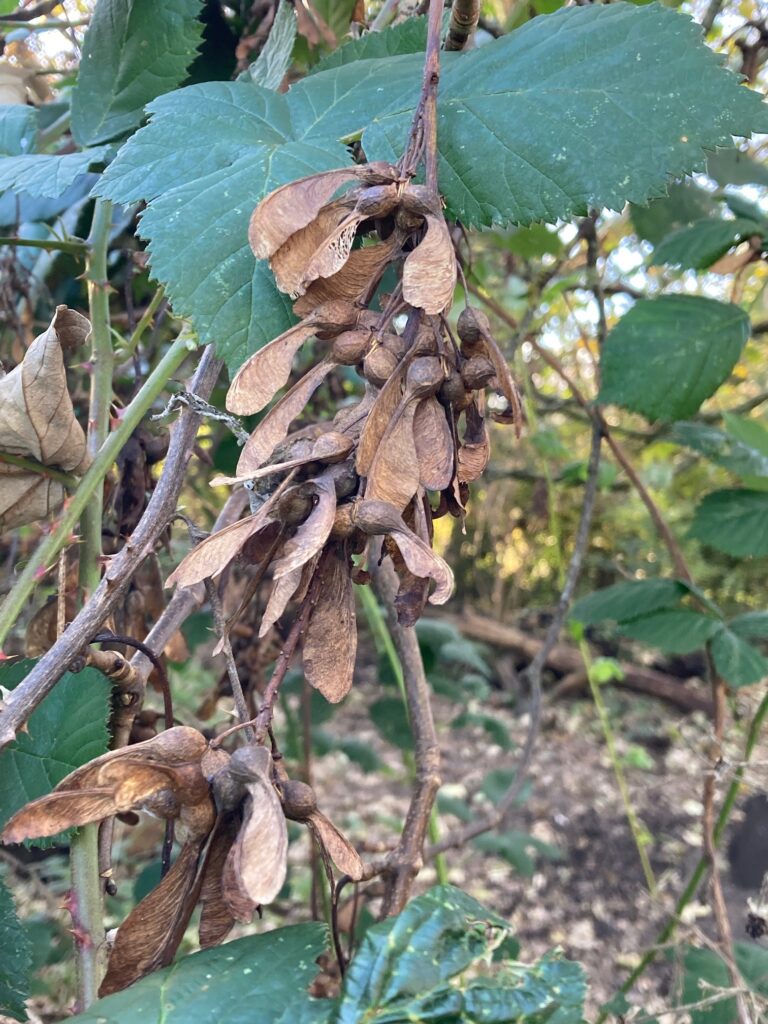What3Words reference: turned.visa.gallons
Location notes: Group of 2 trees, one with smooth bark, near the Crab Apple and the large stump and fallen trunk.
This non-native tree is native to the Balkan Peninsula and was first introduced to the UK from Turkey in the late 16th century. It is a common sight in parks and gardens where its white cones of florets with a pink eye make a stunning show in May. It is of course a favourite tree for children to collect conkers in the autumn.
A slightly smaller variety especially along urban main roads, the Red Horse Chestnut, Aesculus Carnea Briotti, with red cones of flowers, is less long lived.
Mature horse chestnut tree can live for 300 years and grow to a height of 40m. The bark is smooth and pinky-grey when young, and darkens and develops scaly plates with age. Buds are large, oval, dark red and sticky and are a good identifier for the tree in winter.
The seeds of the tree are protected by a green spiky case which split to reveal shiny brown conkers. The leaves are palmate; in other words 5 or 7 pointed, toothed leaflets arranged in a symmetrical fan round a central stem.
The flowers provide a rich source of nectar and pollen for insects, particularly bees. Caterpillars of the triangle moth feed on its leaves, as does the horse chestnut leaf-miner moth whose caterpillars provide food for blue tits. Deer and other mammals eat the conkers.
Probably due to being an introduction, there is little mythology connected but there are many rules in different parts of the country in the UK for playing conker games.
Photographs to follow.


